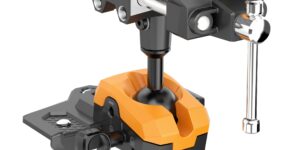Label Everything
Labeling isn’t difficult, but it seems to be a part of 5S that’s often overlooked or ignored. Rick Bohan of Chagrin River Consulting examines why it’s easy to get everything straightened up initially, but the work area will revert back to the original mess if labeling isn’t carried out.
Posted: March 7, 2011
Labeling isn’t difficult, but it seems to be a part of 5S that’s often overlooked or ignored. It’s easy to get everything straightened up initially, but the work area will revert back to the original mess if labeling isn’t carried out. Here’s why.
In “Starting Point” (The Skinny On Lean, May 2010) we discussed how to get started on a lean initiative by first implementing 5S, then we presented an outline for conducting a 5S workshop that teaches the basic concepts of this lean philosophy and enables employees to get engaged in actually applying them. Now we’re going to expand the 5S philosophy into the operation of the Visual Factory.
Visual is a fancy term for “maintain by sight,” the lean method of conveying data and information through signs, charts, electronic boards and other devices that make the current status of all processes immediately apparent. Labeling everything is an obvious and integral component of maintaining by sight. Though labeling is not difficult, it seems to be a part of 5S that is often overlooked or ignored. The significance of this simple procedure cannot be emphasized enough – initially straightening up a work station may be easy, but without proper labeling that station will revert back to its original mess in short time. And productivity drops while costs increase.
You may be thinking “come on, that’s overkill! My operators and supervisors don’t need that much labeling to tell them what’s going on!” And you may be right if you have a mature, highly skilled workforce that has worked together in unity for some time. But after the economic problems that have devastated much of metal manufacturing these past two years, many plants no longer recognize this sort of utopian workforce. And this is where labeling produces a significant return on investment.
Labeling helps new employees learn your work procedures quickly. This, in turn, enables these new hires to adapt to your broader production systems must faster. That’s not all. What about those veterans you’ve called back from being laid off? Labels help them perform jobs that they haven’t done in a while. Even veterans can forget or get tired and miss something.
Because labeling is easy and helpful, what is the harm in labeling something that didn’t really need it? However, if someone makes a mistake that could have been prevented by a simple label, that can cost you plenty. If your plant does not have a good labeling system (beyond just a label gun!), then get one. Here are a few of the important roles of labels in a lean manufacturing system:
THEY TELL WHERE THINGS GET PUT AWAY
Labels locate things. Add labels to assure things get put back where they belong. If there is a hanger for the crescent wrench that is used on the machine, place a “Crescent Wrench” label on that hanger. Label each shelf as to what – specifically and exactly – should go in that space. Purchase bins and boxes for small tools, parts, and supplies and label each one of them. Drawers and cabinets should have labels on the outside that indicate contents. Any barrel, drum, or other storage container should have a label defining what is inside.
Use signs, floor markings, and labels to indicate where large items and equipment get put away or stored. You’ll discover lots of opportunities for shadow-boards, color-coding, shaped holders (drawer templates or implement holders that are shaped to accept a specific tool or other item). Take advantage of them all.
THEY TELL WHERE THINGS MOVE AND FLOW
Labels organize and streamline flow. Labels and signs tell where raw materials, work in process, finished product, and supplies used during an operation need to be placed. Indicate transportation and traffic lanes with signs and floor lines. Indicate product or material flow with signs, symbols, and labels.
THEY TELL HOW THINGS WORK
Labels simplify work. Most shops I go into use control panels that are full of knobs, buttons, toggles, and switches that are not labeled at all. This can be a nightmare for operators in training. Everything needs to be labeled as to its function. Knob, key switch, and toggle positions need to be labeled. All variable controls, such as speed controls, need to be labeled with a scale or an index.
All variable controls should be labeled to clearly explain which way to turn/push/alter the control to accomplish the change you desire. A label should clarify which way to turn the knob to get the machine to slow down and which way to get the machine to go faster. Don’t forget to label the control panel itself – does the control panel hold the controls for the press or for the feeder? Every lever, wheel, and crank should be labeled as to its function and operation. Which way to turn the wheel to expand the mandrel? Which way to push the lever to open the pinch rollers?
For a new operator having little to no experience, all of these things can be hard to remember – and time consuming. Less time to learn equates to less cost to produce and more time to make money.
THEY TELL WHAT THINGS ARE OR WHAT THEY DO
Labels identify things. Label electrical boxes and panels, electrical lines and label the voltage. Label gas lines, air lines, water lines, steam lines, oil lines, pipes and conduits of all sorts. Label the direction of the flow of air, water, oil, etc. inside the conduit or pipe. Label all pieces of equipment and machinery. Label areas that are devoted to specific functions and purposes.
THEY MAKE IT EASY TO TELL WHAT’S GOING ON
Labels explain the process. Every analog gauge, fluid level, digital readout or indicator of any sort should be labeled as to what it measures. This is especially true if operators, in their normal running routines, use that particular gauge or indicator. From our earlier 5S teaching, you’ve already made certain that all such indicators are easy to see and easy to read, right? Are they big and handily located? Are the scales and indices large and easy to read?
Analog gauges and indicators should be marked to show operating ranges. On an oil pressure gauge, mark the pressure that’s too low and the pressure that’s too high with lines drawn on the gage itself. On a temperature gauge, mark the temperature range within which the operation needs to stay. On a digital readout, add a label that tells what the high and/or low readings are.
There is no such thing as having too much information on the shop floor. Use these simple labeling techniques as a Visual Factory method to maintain your profitability.










